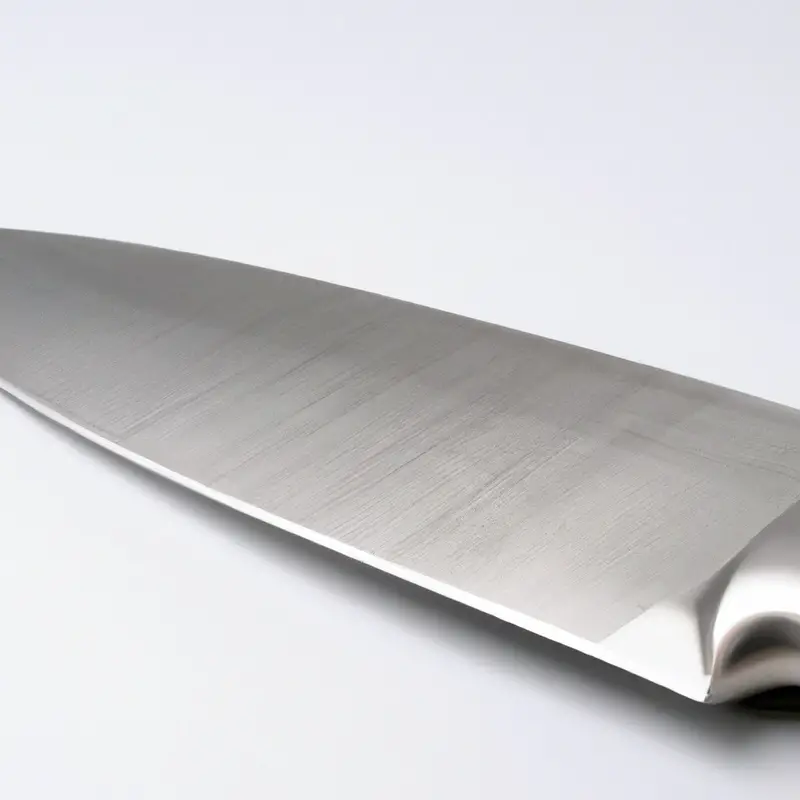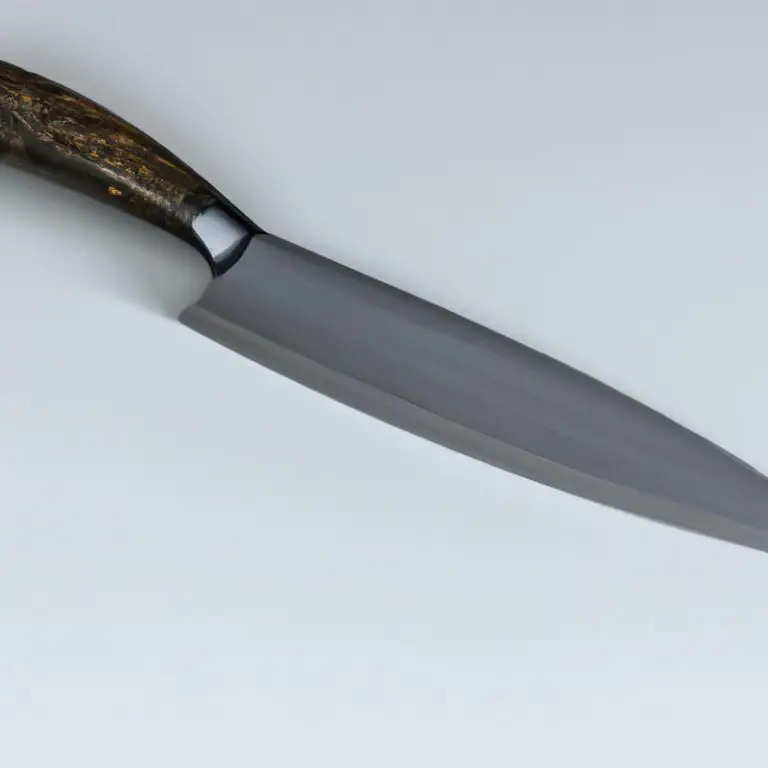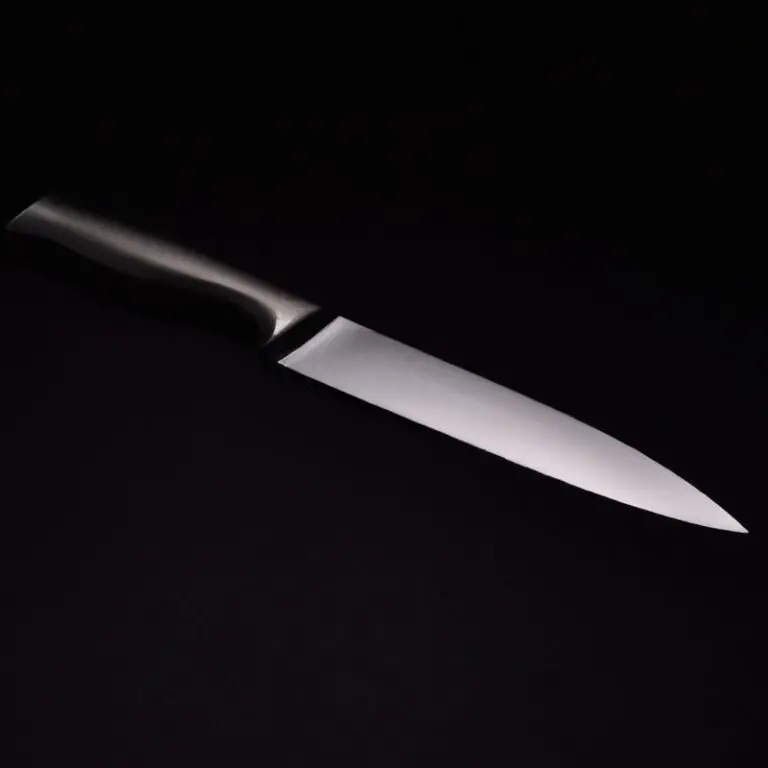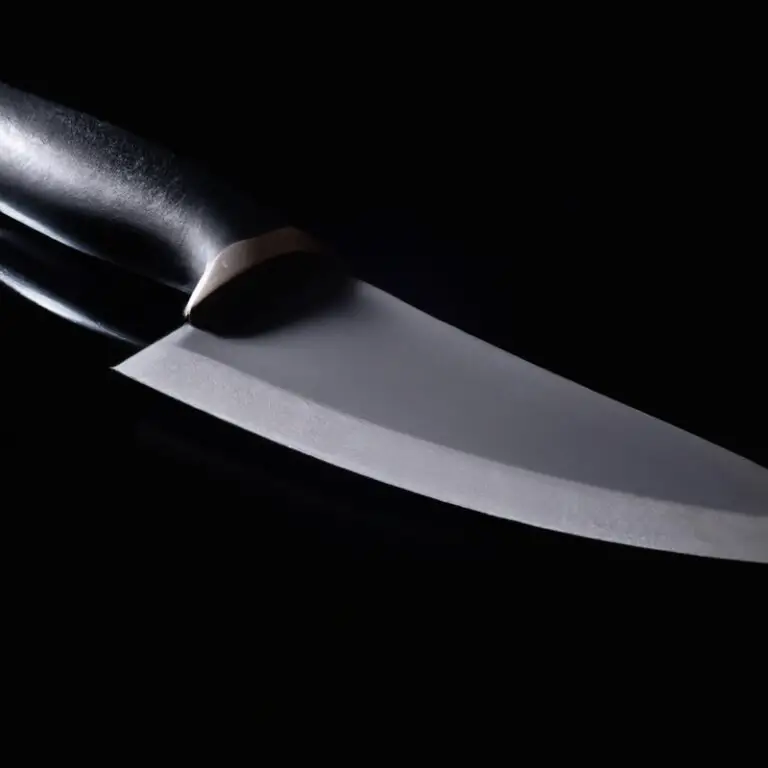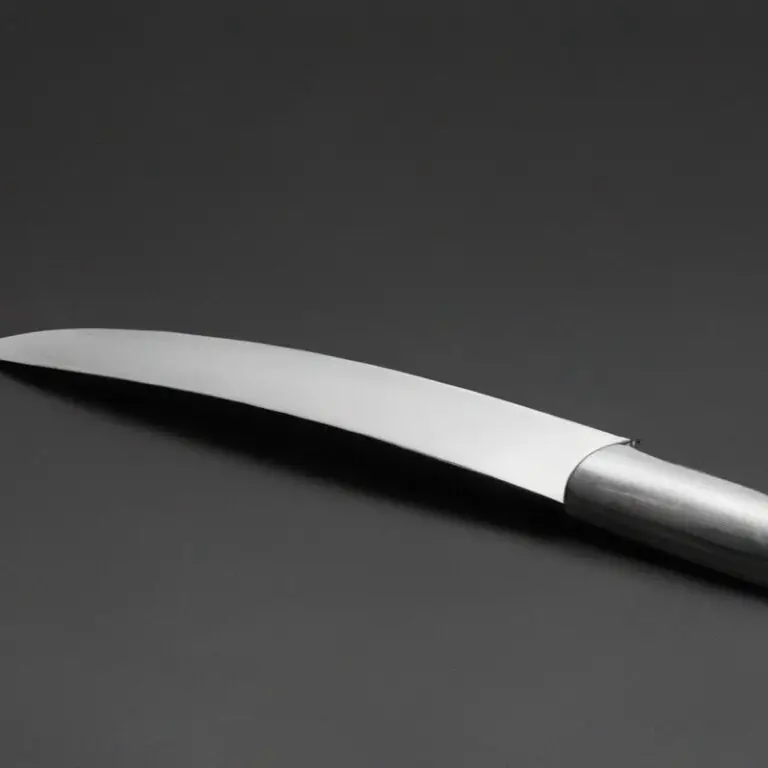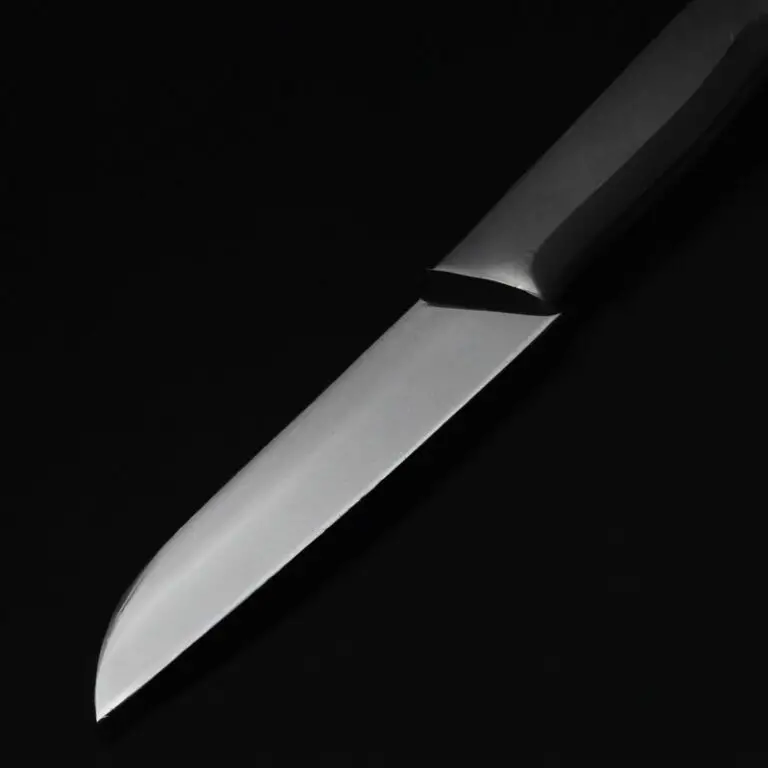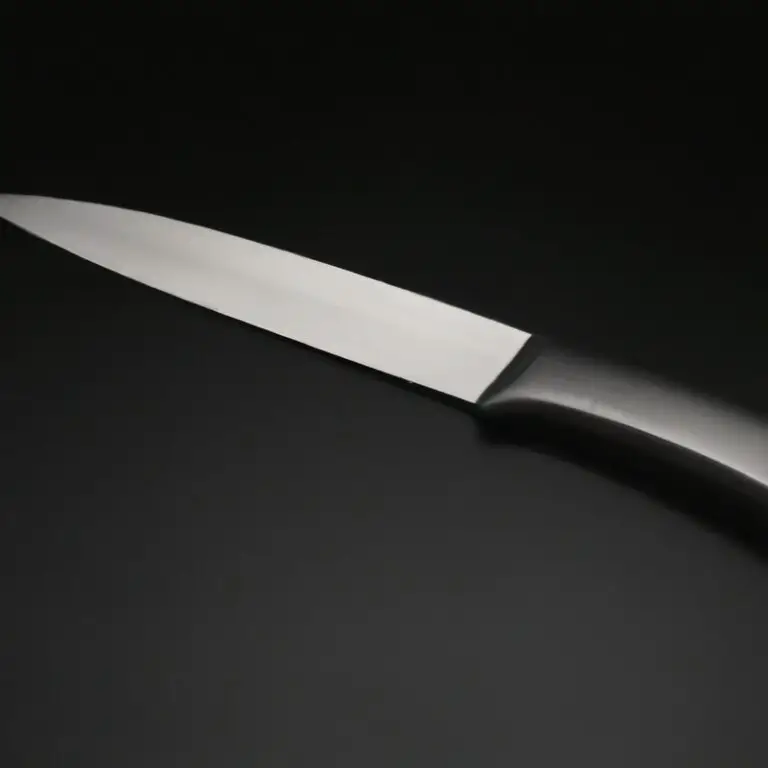Can You Use a Santoku Knife For Cutting Cheese? Time-Saver
Key Takeaways:
- Santoku knives can be used for cutting cheese, but their thin blade may not be ideal for harder varieties.
- Using a Santoku knife for cheese requires proper technique and caution to avoid damage or injury.
- When choosing a knife for cheese, consider the type of cheese and its texture to determine the best knife for the job.
- Experiment with different types of knives, including specific cheese knives, to find the perfect tool for your cheese cutting needs.
Do you have a Santoku knife, and are wondering if it’s suitable for slicing cheese? As a chef with extensive experience in the kitchen, I’ve received this question countless times.
While Santoku knives are incredibly versatile and popular, they may not be the best choice for cutting cheese.
In this article, we’ll explore the characteristics of Santoku knives, and compare them to the ideal attributes of cheese knives. We’ll also dive into the anatomy of a Santoku knife, and share techniques and tips for maximizing its potential when cutting cheese.
Read on to discover everything you need to know about using a Santoku knife for cheese and more!
| Santoku Knife for Cutting Cheese | |
|---|---|
| Pros | Cons |
| 1. Santoku knife’s flat edge can provide a smooth cut and slice through cheese with ease. | 1. The sharp point of Santoku knife may not work well with soft cheese and may cause it to stick and deform. |
| 2. The Granton edge on the Santoku knife can reduce air pockets between the cheese and the blade, resulting in a cleaner and more precise cut. | 2. Unlike a traditional cheese knife, a Santoku knife may not have a serrated edge for cutting through harder cheese. |
| 3. The curved blade of the Santoku knife can easily cut through hard and semi-hard cheeses without damaging the cheese. | 3. Santoku knife may not provide the same level of control as a cheese knife due to its design and weight. |
Santoku Knife 101: What Is It and How Is It Different from Other Knives?
A Santoku knife is a type of Japanese kitchen knife with a sharp, wide blade that is great for slicing, dicing, and chopping vegetables and meats. It has a straight edge and a rounded tip, unlike the pointed tip of a chef’s knife.
The word Santoku means “three virtues” in Japanese, referring to its ability to excel in three types of cutting tasks: slicing, chopping, and dicing.
Compared to other knives, a Santoku blade is thinner and lighter, making it easier to handle and control. The blade’s wide shape also allows for a shorter cutting motion, reducing strain on the wrist.
However, because of its straight edge and lack of serrations, a Santoku knife may not be the best choice for cutting hard cheeses or other foods with tough exteriors.
In these cases, a specialized cheese knife with a serrated edge may be a better option. Overall, a Santoku knife is a versatile and useful addition to any kitchen, particularly for those who prepare a lot of vegetables and meats.
The Characteristics of a Good Cheese Knife: How Does a Santoku Compare?
A good cheese knife should possess specific characteristics. Its blade must be sharp, thin, and have a non-stick surface to prevent the cheese from sticking to it.
Cheese knives may also have a forked tip to help cut and serve the cheese.
While Santoku knives are excellent for slicing fruits, vegetables, and meats, they may not be the best option for cutting cheese. This is because Santoku knives have a straight edge and may not be able to handle soft and crumbly cheeses as effectively as a specialized cheese knife.
Cheese knives, on the other hand, have a shorter and thicker blade, allowing them to apply more pressure when cutting through cheese.
Therefore, if you plan to cut large blocks of cheese, a cheese knife is the better tool to have on hand.
The Anatomy of a Santoku Knife: Understanding Its Parts and Features
A Santoku knife is a versatile kitchen tool with a unique design that sets it apart from other knives. The word “Santoku” translates to “three virtues” in Japanese, referring to its ability to chop, slice, and dice foods with ease.
The anatomy of a Santoku knife comprises three parts: the blade, handle, and bolster.
The blade is usually made of high-carbon steel, which maintains its sharp edge for extended periods, while the handle is comfortable and ergonomic, allowing for a firm grip and precise control during use. The bolster sits between the blade and handle, providing balance and stability to the knife.
The blade of a Santoku knife is typically shorter, wider, and thinner than that of a traditional chef’s knife.
It features a straight edge with a slight curve towards the tip, enabling it to cut smoothly through foods using a rocking motion. Additionally, many Santoku knives have a granton edge, also known as a scalloped edge, which helps prevent food from sticking to the blade during use.
Overall, the design of a Santoku knife makes it an excellent choice for slicing and dicing fruits, vegetables, and boneless meats.
While it can also cut cheese, some may argue that a specialized cheese knife may be a better option.
Why Santoku Knives May Not Be the Best for Cutting Cheese: A Comprehensive Look
Santoku knives may not be the best option for cutting cheese due to their design and blade shape. The flat edge of a Santoku knife, typically used for chopping, can compress and squash soft cheeses, resulting in an uneven slice and loss of flavor.
The lack of a pointed tip on a Santoku knife also makes it challenging to cut through hard, aged cheeses like Parmesan or Cheddar.
Additionally, the wide blade on a Santoku knife can make it difficult to maneuver when slicing smaller and more delicate cheeses, such as Brie or Camembert. While a Santoku knife may work for some types of cheese, it’s recommended to use a specialized cheese knife or a traditional Western-style chef’s knife instead for optimal results.
Cutting Different Types of Cheese: Which Ones Are Best Suited for a Santoku Knife?
Certain types of cheese are better suited for cutting with a Santoku knife than others. Soft and semi-soft varieties such as brie, camembert, and goat cheese, as well as harder varieties like cheddar and gouda, are ideal for cutting with a Santoku knife due to its straight blade and sharpness.
However, for extremely hard cheeses, such as parmesan or pecorino romano, a dedicated cheese knife with a pointed tip may be more effective.
When using a Santoku knife to cut cheese, it is important to ensure the blade is sharp, as a dull blade may create a mess instead of a clean cut.
How to Cut Cheese with a Santoku Knife: Techniques and Tips for Optimal Results
To cut cheese with a santoku knife, use the following techniques and tips for optimal results:
- Choose the right cheese: Soft cheese like brie or camembert can be easily cut with a santoku knife, but harder cheese like cheddar or parmesan would require a different type of knife.
- Use a sharp blade: A sharp blade will ensure smooth, clean cuts through the cheese.
- Cut with a gentle sawing motion: Unlike chopping, cutting cheese requires a gentle sawing motion to maintain its shape and texture.
- Cut against the grain: When cutting hard cheese, cut against the grain to avoid crumbling.
- Don’t apply too much pressure: Applying too much pressure can cause the cheese to squish and result in uneven cuts.
- Let cheese come to room temperature: Letting cheese come to room temperature before cutting can make it easier to handle and cut smoothly.
By following these techniques and tips, you can achieve optimal results when using a santoku knife to cut cheese.
Maintaining Your Santoku Knife: Best Practices for Long-Term Use and Durability
To keep your Santoku knife in excellent condition and ensure long-term use and durability, follow these best practices:
- Hand-wash your knife with warm water and mild soap after each use. Avoid putting it in the dishwasher, as the harsh detergents and high heat can damage the blade and handle.
- Dry the knife immediately after washing to prevent rust and corrosion. Use a soft, clean cloth to wipe the blade and handle thoroughly.
- Store your Santoku knife in a knife block or on a magnetic strip to protect the blade from damage and prevent accidents.
- Sharpen your knife regularly using a sharpening stone or honing rod. This will keep the blade sharp and reduce the risk of accidents while cutting.
- Avoid using your Santoku knife on hard surfaces like glass or marble, as this can dull the blade quickly. Stick to soft cutting boards made of wood, bamboo, or plastic.
By following these best practices, you can ensure your Santoku knife stays sharp, strong, and dependable for years to come.
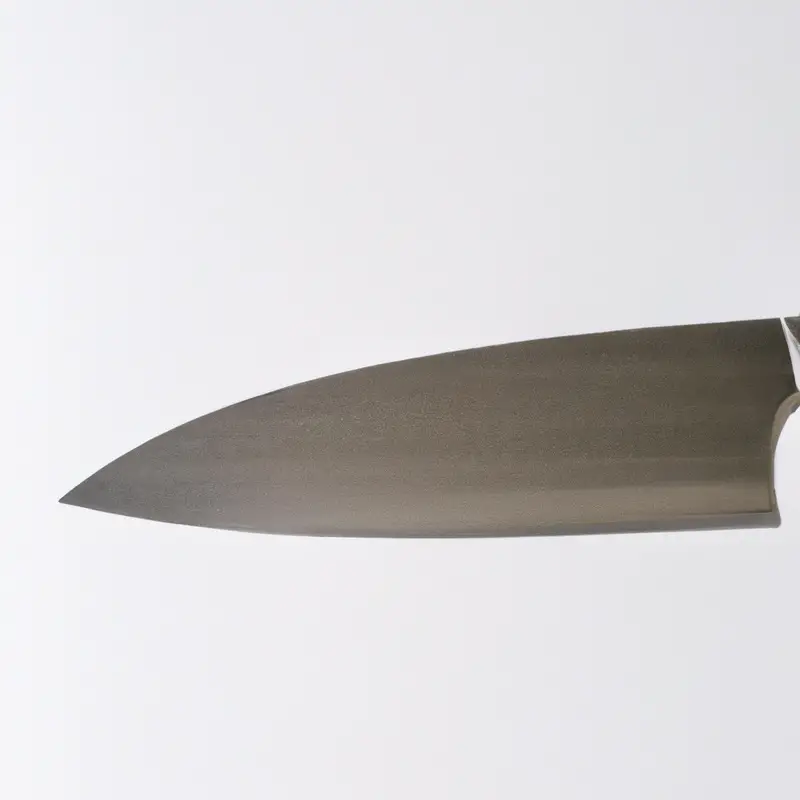
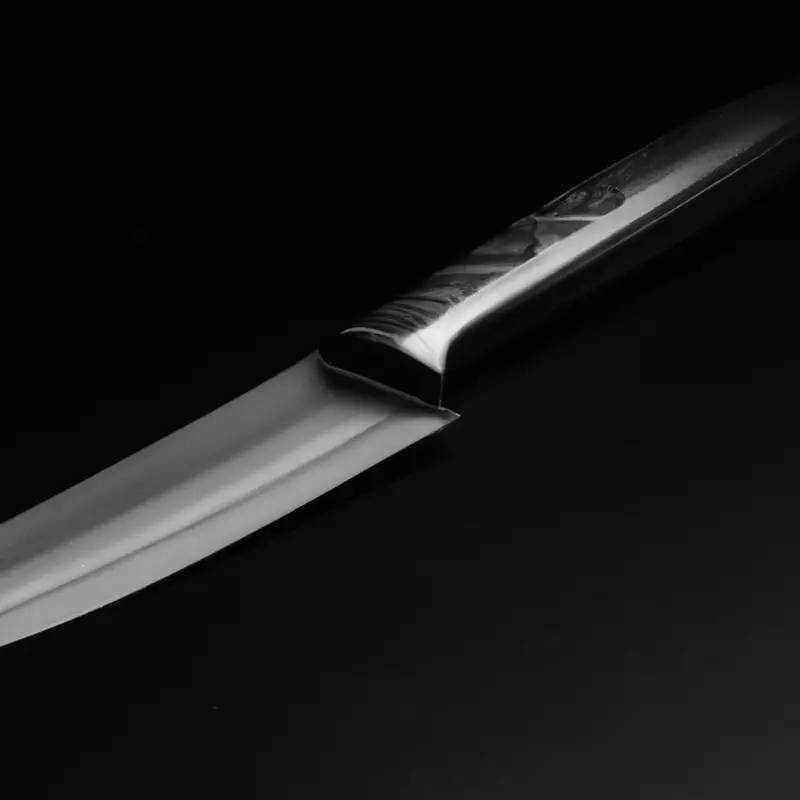
How to Choose the Right Knife for Cutting Cheese: Factors to Consider
When it comes to choosing the right knife for cutting cheese, there are several factors to consider. First, consider the type of cheese you will be cutting.
Soft cheeses such as brie require a knife with a wider blade and a sharp edge.
Hard cheeses like cheddar require a knife with a straight blade and a sharp point. Another factor to consider is the shape of the knife.
A cheese knife with a curved or forked blade will make it easier to slice through different types of cheese without the cheese sticking to the blade.
The handle should also be comfortable to hold and provide a secure grip. The material of the knife is also important.
Stainless steel knives are durable and do not rust easily.
However, some cheese knives have a non-stick coating to prevent cheese from getting stuck to the blade. It is important to choose a knife that is specific for cutting cheese, rather than using a general-purpose knife such as a Santoku knife.
While a Santoku knife can be used for cutting cheese, it is not specifically designed for the task and may not provide optimal results.
Lastly, consider the brand and price point. A high-quality cheese knife from a reputable brand will typically provide better results and last longer than a cheaper, lower-quality option.
In summary, when choosing a knife for cutting cheese, consider the type of cheese, the shape and material of the knife, and the brand and price point.
A cheese knife specifically designed for the task will typically provide the best results.
Beyond Cheese: Other Foods That Can Benefit from a Santoku Knife’s Versatility
Aside from cutting cheese, a Santoku knife’s versatility makes it an excellent tool in the kitchen for various tasks. Its sharp and lightweight blade makes it suitable for precise slicing, dicing, and chopping vegetables, fruits, and herbs.
It’s also great for cutting through boneless meats and fish and creating thin slices of sushi.
Due to its straight edge and sharp tip, it’s perfect for preparing garnishes and intricate food decorations. With its wide blade and comfortable grip, the Santoku knife can also scrape and transfer food from the cutting board effortlessly.
Overall, a Santoku knife’s versatility makes it a valuable addition to any kitchen, making food preparation easier, more efficient, and more enjoyable.
Santoku or Cheese Knife? Which One Should You Choose for Your Kitchen Needs?
When it comes to choosing between a Santoku knife and a cheese knife for your kitchen needs, it ultimately depends on the types of cheese you will be cutting and your personal preferences. If you will be cutting soft or crumbly cheeses, a cheese knife with a forked tip will be the better option as it helps to lift and serve the cheese without it crumbling.
For hard cheeses, a sharp and strong Santoku knife can be used as it can easily slice through the cheese without breaking or crumbling it.
In summary, if you frequently cut a variety of soft and crumbly cheeses, investing in a cheese knife may be worth it. However, if you primarily cut hard and firm cheeses or prefer using a versatile knife in your kitchen, a Santoku knife may be suitable for your needs.
Final Verdict
While a Santoku knife can certainly be used for cutting cheese, it may not always be the best option. Understanding the characteristics of a good cheese knife and the different types of cheese you’re cutting can help you make the right choice for your kitchen needs.
By following the proper techniques and maintenance practices, a Santoku knife can provide versatile benefits not only for cutting cheese but for a variety of other foods.
Ultimately, the decision between a Santoku knife or a cheese knife comes down to personal preference and the specific tasks at hand. By considering all the factors and taking a thoughtful approach, you’ll be equipped to make the best choice for your cheese cutting needs.
With these insights and knowledge, you’ll be able to confidently select the right knife for any cheese cutting task, and enjoy optimal results for many years to come.

